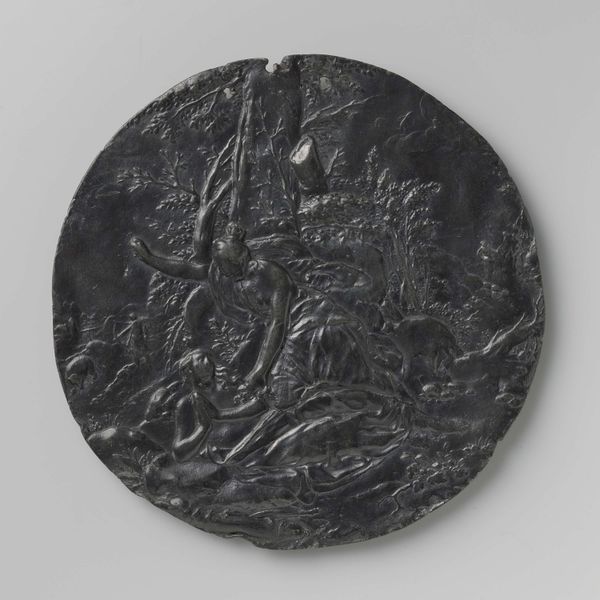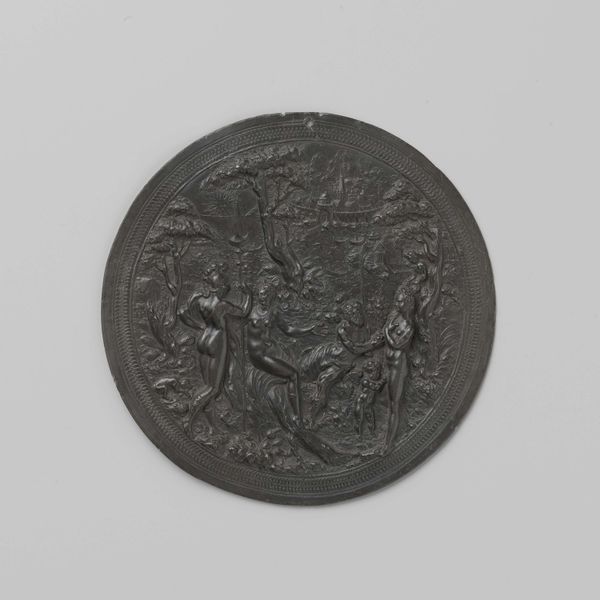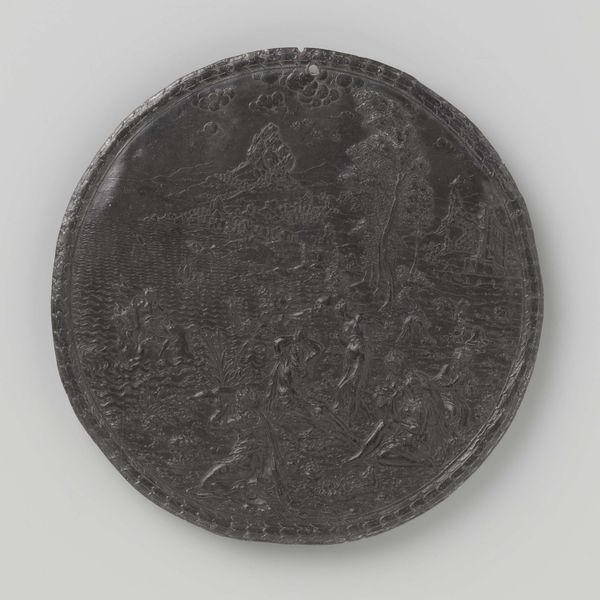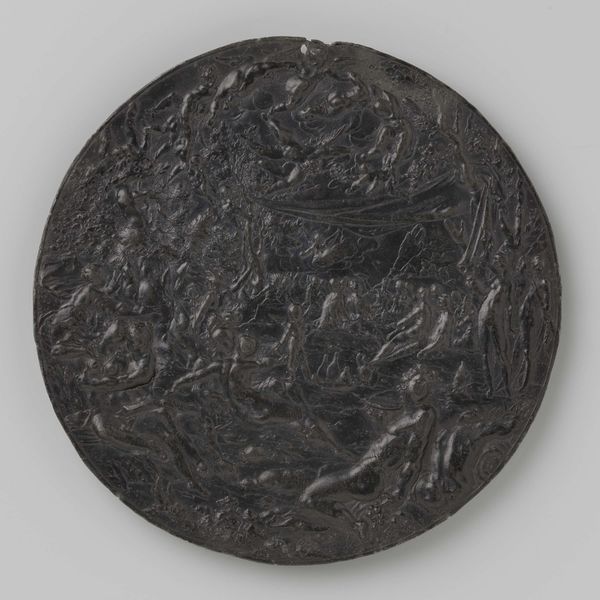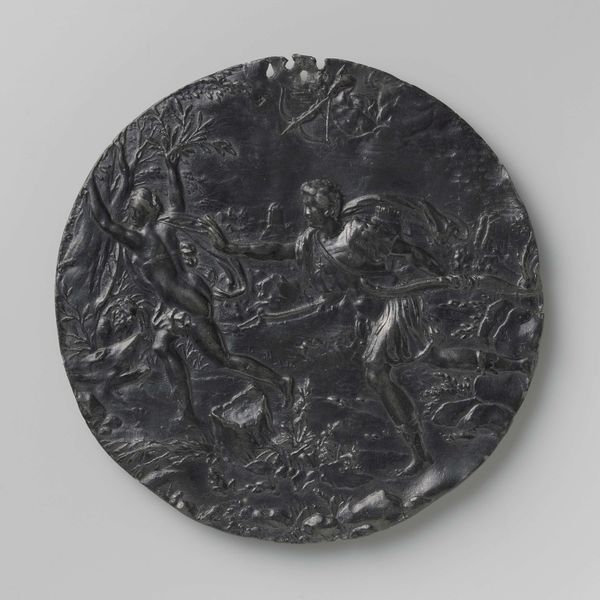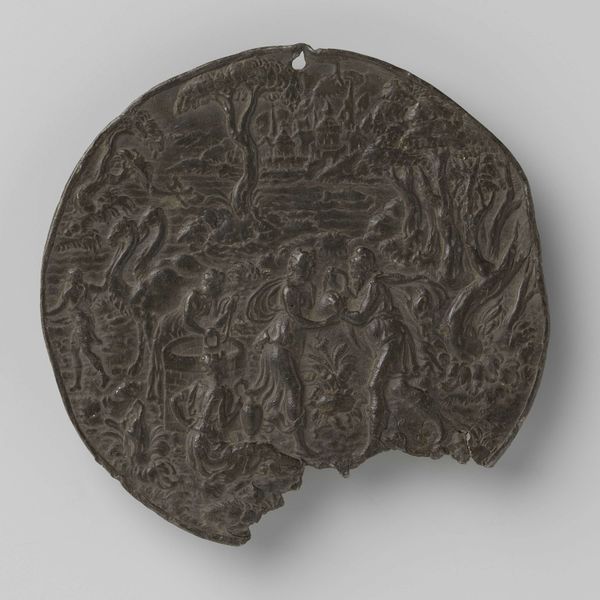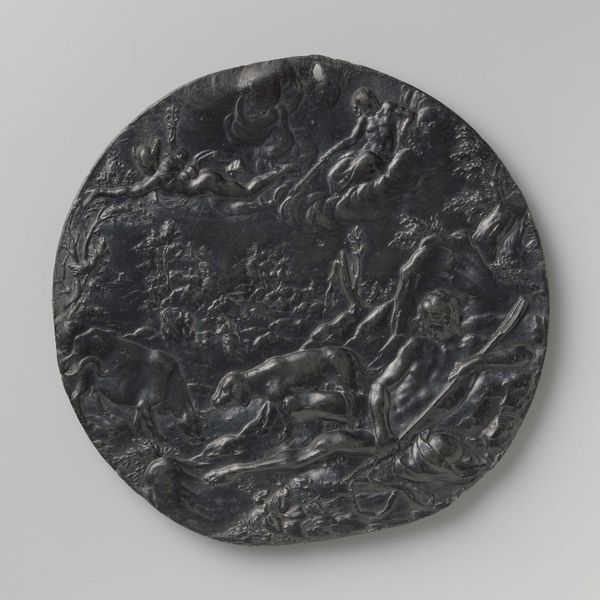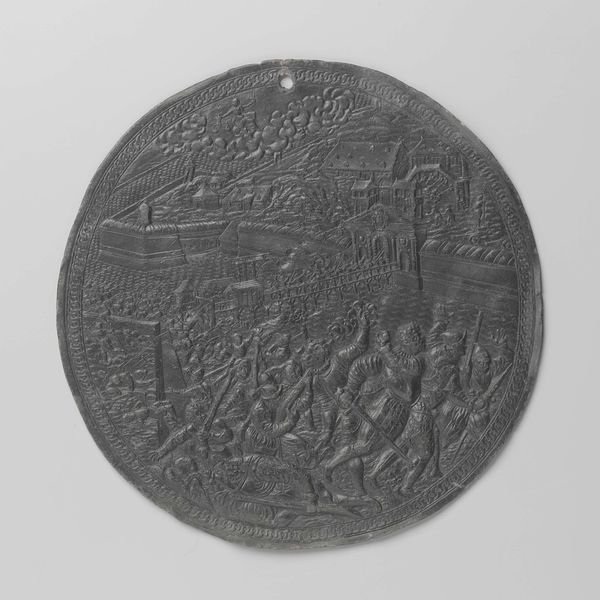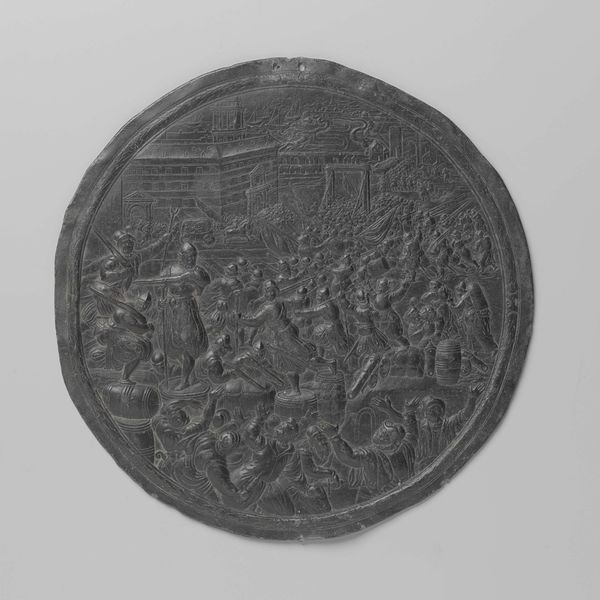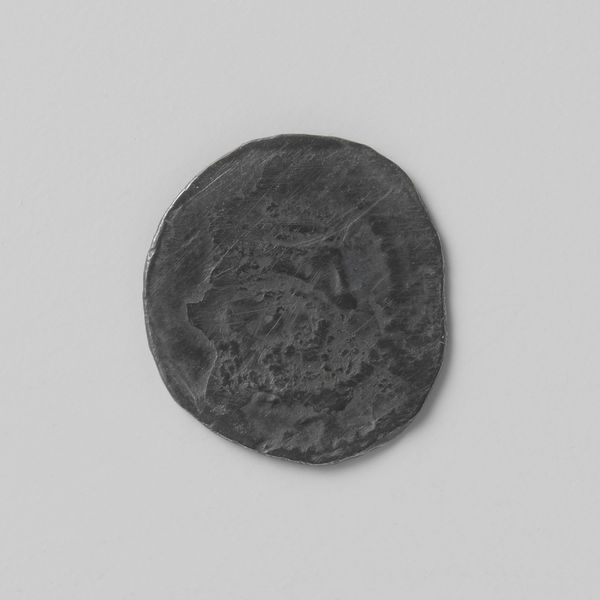
metal, relief, sculpture
#
narrative-art
#
metal
#
relief
#
mannerism
#
figuration
#
sculpture
#
history-painting
Dimensions: diameter 17 cm, weight 482 gr
Copyright: Rijks Museum: Open Domain
Curator: Here we have a metal relief known as "The Anointing of David" attributed to Hans (?) Jamnitzer, dating from around 1550 to 1575. It’s currently part of the Rijksmuseum collection. Editor: Wow, it's dense. Dark, intricate, looks like a turbulent storm frozen in metal. Is it supposed to look like some sort of bronze shield that's seen better days? Curator: It's made with an unmistakable Mannerist style that favored crowded compositions. Biblical scenes, like this, became vehicles to showcase both the artist's skill and a patron’s learning and wealth. Editor: All those bodies... they’re really packed in. I feel like I’m watching a play happening inside a slightly dented porthole. But beneath that initial impression of claustrophobia, I sense movement. The figures aren't just static shapes; they’re leaning, gesturing, emoting! Curator: Exactly. Though contained within the circle and shallow depth, it is meant to project energy. Anointing rituals served not just a religious purpose but affirmed social order and royal power; artworks were crucial in solidifying such beliefs. Editor: Royal power, right. You see that guy getting doused? He's not exactly radiating regal vibes just now; more like, "Please stop, you're getting oil in my hair". Makes you think about the actual experience of such public rituals, away from all the grand symbolism. Curator: I suppose that would often depend on where one sat within the pecking order. Though religious artwork during this time ostensibly existed to edify viewers, consider also how these were tools for projecting particular images of power, obedience, and perhaps even ideal social relations that are worth examining. Editor: Definitely. And now looking again, I catch a whiff of dark humor too. Maybe the artist sneaked it in or maybe it is because after so much time, history reshapes itself into comedy. What a world, though! Thanks for pointing me in that direction, and perhaps opening a few unexpected doors for my reflection. Curator: Indeed. Appreciating context is important for engaging with the past.
Comments
No comments
Be the first to comment and join the conversation on the ultimate creative platform.


